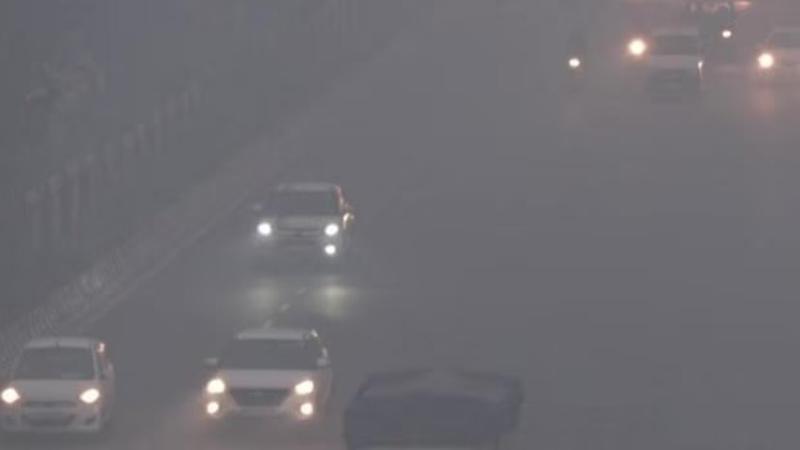Published 00:03 IST, November 14th 2024
Thick Smog Blankets Delhi-NCR, Air Quality Remains 'Severe'
A dense layer of smog enveloped Delhi and surrounding regions of Noida, on Wednesday night.

New Delhi: A thick blanket of smog enveloped New Delhi and surrounding regions, including Noida and Gurugram, on Wednesday night, worsening air quality and disrupting daily life. Earlier in the day visibility dropped to near zero at Indira Gandhi International Airport, causing significant flight delays and diversions.
The India Meteorological Department (IMD) reported that visibility at the airport was almost non-existent at 8:30 AM, with the Runway Visual Range (RVR) fluctuating between 125 and 500 meters. As a result, at least 10 flights were diverted to alternative airports, including six to Jaipur and one to Lucknow, starting at 7 AM.
Delhi International Airport Limited (DIAL) confirmed that while takeoffs and landings continued, flights that were not equipped with CAT III navigation systems, designed to handle low-visibility conditions, were particularly impacted. CAT III systems allow aircraft to land safely even in extremely poor visibility.
The dense fog and deteriorating air quality prompted the Central Pollution Control Board (CPCB) to classify Delhi's Air Quality Index (AQI) in the ‘Severe’ category, surpassing the 400 mark. Neighboring cities like Noida, Gurugram, and Ghaziabad also saw AQI levels reach the ‘Poor’ category. In contrast, Faridabad recorded a slightly better AQI of 188, placing it in the ‘Moderate’ category.
Monitoring stations in Anand Vihar and Aya Nagar, two of the city’s worst-hit areas, reported air quality in the “severe” range. With the AQI remaining in the ‘Very Poor’ category for over two weeks, residents have expressed concerns about the ongoing health risks posed by the pollution.
The IMD predicted that the dense fog, which began forming around 5:30 AM, would give way to shallow fog later in the day. The maximum temperature was expected to reach 32°C. However, air quality was expected to remain a major concern, with the second stage of the Graded Response Action Plan (GRAP) still in effect. This includes measures such as mechanical sweeping, water sprinkling on roads, and dust control at construction sites.
The air quality situation was not limited to Delhi. Across the Indo-Gangetic Plains, several cities, including Patna, Chandigarh, and Ludhiana, reported hazardous pollution levels. Chandigarh, which boasts the third-highest tree cover in India, recorded an AQI of 375, placing it in the 'Very Poor' category, surpassing the industrial city of Ludhiana (AQI 212).
The situation is becoming increasingly dire in neighboring Pakistan as well, where the United Nations Children's Fund (UNICEF) issued a warning about the potential health risks posed to 11 million children in the eastern Punjab region due to the worsening air pollution.
Get Current Updates on India News, Entertainment News along with Latest News and Top Headlines from India and around the world.
Updated 01:05 IST, November 14th 2024




